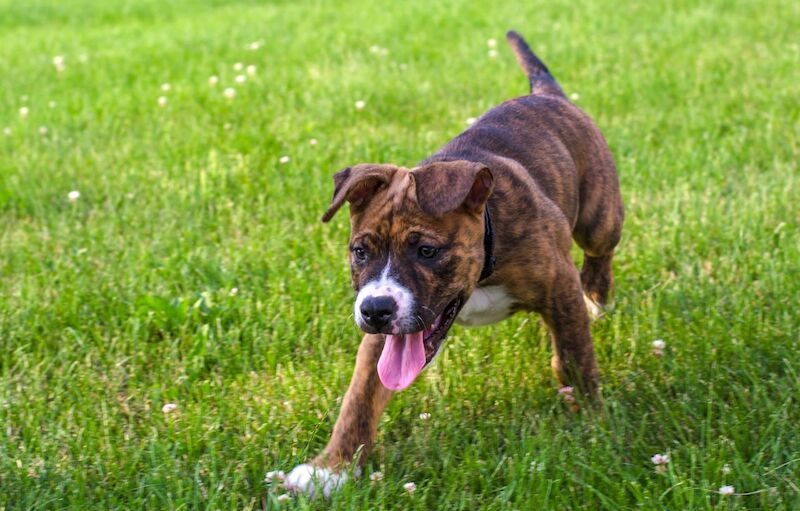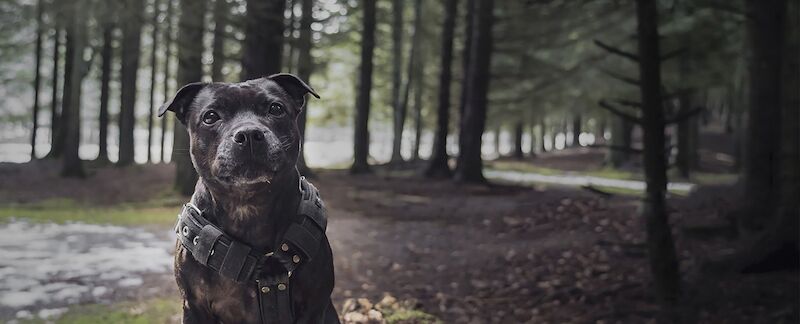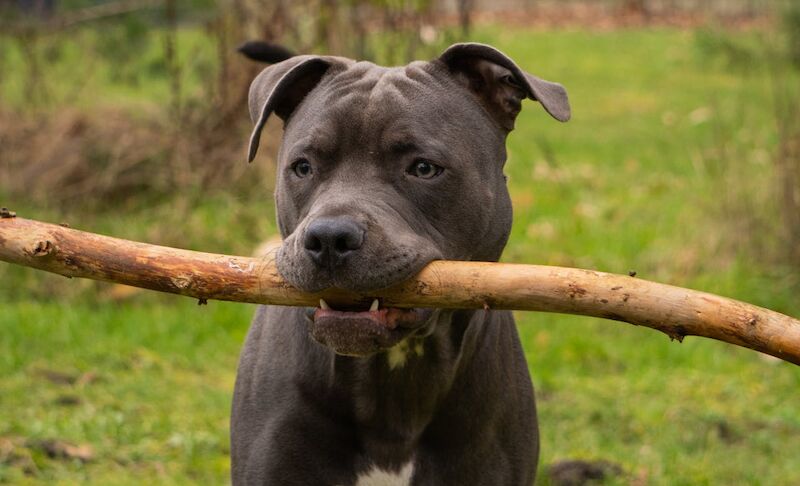
Staffordshire Bull Terriers are intelligent, loyal, and full of energy. While they are naturally loving and eager to please, their strong-willed nature and exuberance mean training is vital. Proper training ensures your Staffie grows into a well-behaved, confident, and happy companion. Below, we'll explore essential training tips tailored for this wonderful breed, breaking down the key aspects in detail.
1. Start Early with Socialization
Socialization is the foundation of good behaviour. Introducing your Staffie to a variety of people, dogs, environments, and experiences during their early weeks helps them develop confidence and adaptability.
Why Socialization is Important:
- Prevents fearfulness or aggression towards unfamiliar situations.
- Encourages positive interactions with other dogs and people.
- Reduces anxiety in new environments, such as parks, cafes, or vet clinics.
How to Socialize Your Staffie:
- Begin as soon as your puppy is fully vaccinated.
- Arrange playdates with other dogs and visit different settings, like busy streets or quiet countryside.
- Reward calm and positive behaviour during new experiences with treats or praise.
If you're considering a new puppy, choose one from a responsible breeder who ensures early socialization. Check our Staffie breeders directory for options.
2. Use Positive Reinforcement Techniques
Staffies respond exceptionally well to positive reinforcement, which involves rewarding good behaviour rather than punishing bad behaviour. This builds trust and strengthens your bond.
How Positive Reinforcement Works:
- Rewards: Offer treats, praise, or playtime immediately after desired behaviour.
- Consistency: Reinforce the same behaviour every time it occurs to avoid confusion.
- Avoid Harsh Corrections: Staffies are sensitive dogs, and harsh punishment can lead to fear or anxiety, hindering progress.
For example, when teaching your Staffie to sit, reward them as soon as they perform the action. Repeat frequently to solidify the command.
3. Master Basic Commands
Basic commands like "sit," "stay," "come," and "leave it" are essential for your Staffie's safety and control in various situations.
Key Commands to Teach:
- Sit and Stay: Useful for calming your dog or preventing jumping when greeting people.
- Come: Crucial for recall, especially when off-lead.
- Leave It: Helps avoid them picking up harmful objects or food.
Training Tips:
- Use short, clear commands and consistent hand signals.
- Practice commands daily in different settings, gradually increasing distractions.
- Be patient. Staffies are quick learners, but repetition is key.
4. Addressing Problem Behaviors
Like any breed, Staffies can develop undesirable behaviors if not addressed early. The most common issues include jumping, pulling on the lead, and chewing.
Jumping:
Staffies are enthusiastic greeters, but jumping can be overwhelming for some people.
- Solution: Train them to sit when meeting people. Ignore jumping and only give attention when all four paws are on the ground.
Pulling on the Lead:
Their strength can make walks challenging if they pull.
- Solution: Use a front-clip harness and teach loose-lead walking by stopping whenever the lead tightens. Reward them when they walk beside you.
Chewing:
Staffies love to chew, especially as puppies.
- Solution: Provide appropriate chew toys and redirect them if they target furniture or other items.
5. Social Skills with Other Dogs
While Staffies are generally friendly, their exuberance can sometimes be misinterpreted by other dogs. Proper training helps ensure positive interactions.
How to Foster Good Dog-Dog Relationships:
- Controlled Introductions: Use a neutral space for introductions and keep the lead loose to avoid tension.
- Monitor Play: Ensure play remains friendly and doesn't escalate into rough behavior.
- Reward Calmness: Praise and treat your Staffie when they engage politely with other dogs.
If adopting an adult Staffie, check our Staffies for adoption page for details on their behavior around other dogs.
6. Crate Training
Crate training is an excellent way to provide your Staffie with a safe space and aid in house training.
Benefits of Crate Training:
- Helps with potty training by teaching bladder control.
- Provides a secure place for rest and reduces anxiety when left alone.
- Prevents destructive behaviour when unsupervised.
How to Crate Train:
- Make the crate inviting with soft bedding and toys.
- Start by leaving the door open and allowing them to explore on their own.
- Gradually increase the time they spend inside with the door closed, rewarding calm behaviour.
7. Mental Stimulation and Exercise
Staffies are energetic and intelligent, so mental and physical stimulation is essential to prevent boredom-related behaviours like barking or chewing.
Exercise Needs:
- At least 1-2 hours of daily exercise, including walks, playtime, or off-lead running in secure areas.
- Engage them with activities like fetch, tug-of-war, or agility training.
Mental Stimulation:
- Puzzle toys or treat-dispensing toys challenge their problem-solving skills.
- Teach new tricks or commands regularly to keep their minds sharp.
Explore our Staffies for sale page if you're looking for a companion to share an active lifestyle with.
8. Patience and Consistency Are Key
Staffies thrive in environments where they are treated with patience, love, and consistency. Training sessions should be short (10-15 minutes) to keep their attention and always end on a positive note.
Final Thoughts
With the right training, Staffordshire Bull Terriers are incredibly well-mannered and devoted companions. Whether you're starting with a puppy or welcoming an adult Staffie, focus on building trust, using positive reinforcement, and addressing problem behaviours early.
Check out more information on choosing a Staffie or browse our Staffie classifieds to find your perfect match.



